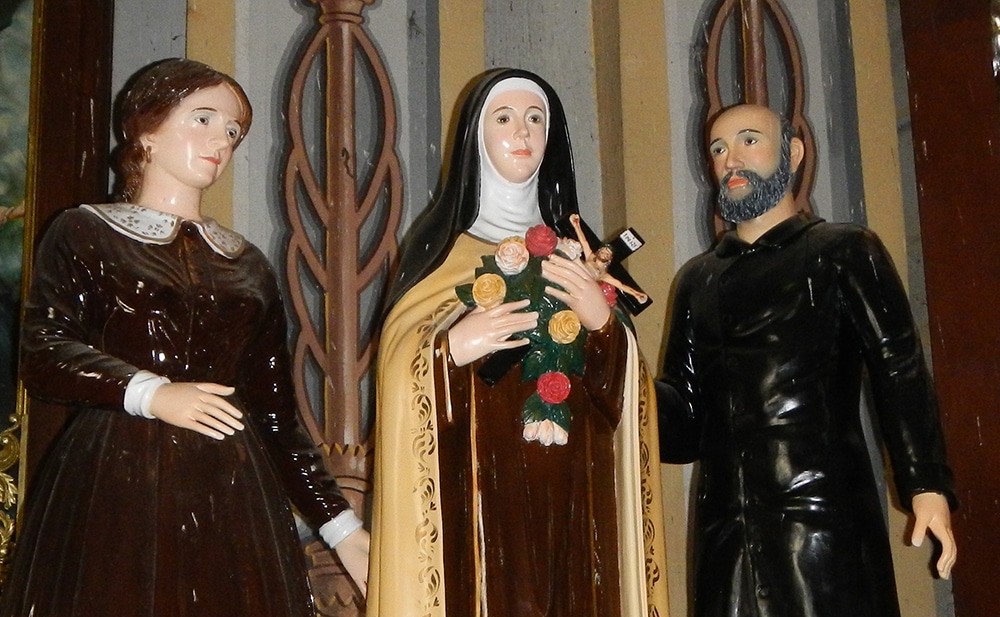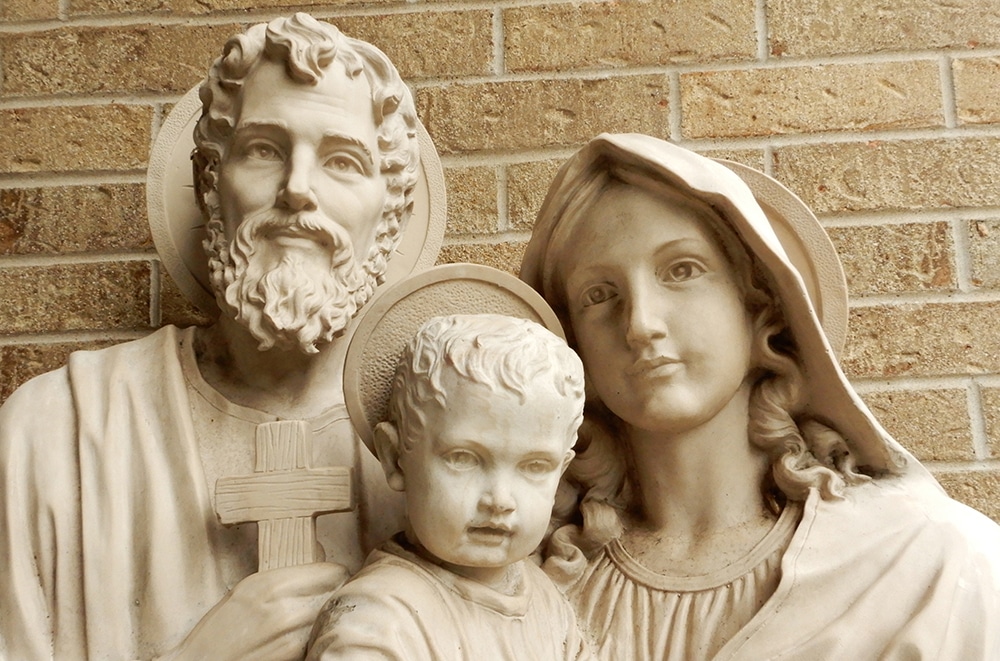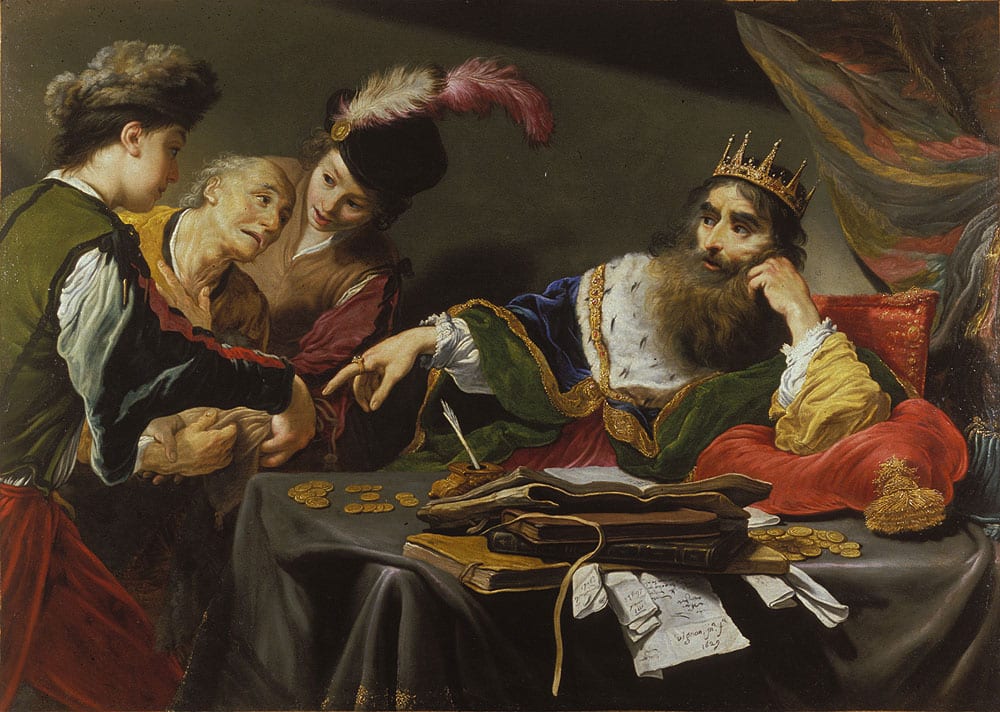 On my second stop during my recent Wisconsin pilgrimage, I visited the Basilica and National Shrine of Mary at Holy Hill in Hubertus, Wisconsin. Run by the Discalced Carmelite friars, the shrine has a special devotion to St. Thérèse of Lisieux, complete with a sub-chapel decorated with stained-glass windows portraying her life.
On my second stop during my recent Wisconsin pilgrimage, I visited the Basilica and National Shrine of Mary at Holy Hill in Hubertus, Wisconsin. Run by the Discalced Carmelite friars, the shrine has a special devotion to St. Thérèse of Lisieux, complete with a sub-chapel decorated with stained-glass windows portraying her life.
While this chapel was sadly under renovations during my visit, I made an obligatory trip to the bookstore and, more specifically, the happily-stocked shelf dedicated to St. Thérèse and her family. So, of course, I left with a little less cash in my wallet. It’s a form of tithing, right?
One of my purchases was “A Family of Saints: The Martins of Lisieux — Saints Thérèse, Louis, and Zèlie” ($22.95, Ignatius) by Father Stéphane-Joseph Piat. I’ve seen this book in Catholic stores for years, but I finally caved and bought it. And I’m so glad I did.
While I’ve read “Story of a Soul” — Thérèse’s autobiography — countless times in addition to some of the popular personal retreats inspired by my patron’s spirituality, I had never truly met her family as a whole. More specifically, I had only known her parents and sisters through her own words or quotes attributed to them that are shared around social media. So while I expected to love this family more by reading this book, I didn’t realize how deeply they could inspire me or transform my view on life.
No further in than the first page of the book’s preface, I was hooked. In explaining how Thérèse grew to become a saint — not to mention the greatest saint of modern times, according to Pope Piux X — the author shared this profound statement: “In order to cause a peak of sanctity to emerge, God works at and raises up a whole series of generations. Giants of holiness who rise up in isolation and detached, as it were, from the family territory are rare.”
And that’s the beauty of the Martin family. They were not saints in isolation. The way Louis and Zèlie raised their daughters — and how their own parents raised them — led to the sanctity of the family and the sainthood of three of its members (with the possibility of a fourth in Servant of God Leonie Martin, the third of the Martin sisters).
Yet the secret to how this family became one of great saints is not really that secret. After finishing this book, I would sum it up in three points.
The first is that they led very simple yet purposeful lives. Louis was a watchmaker, Zèlie a lacemaker — simple middle-class citizens — and together they raised five daughters to adulthood. Yet they did every task with charity and purpose — teaching, you could say, their daughters what Thérèse would later call The Little Way. As Father Piat writes, “The couple rivaled each other in transfiguring the monotonous daily task into a divine work through the supernatural spirit they brought to it.”
The second is that they embraced suffering. Not only did they lose four children at young ages — two girls and two boys, ranging from infancy to the age of nearly 6 — but Zèlie suffered from breast cancer and died at the age of 45. Later, Louis suffered from strokes that impacted him both physically and mentally, even to the point where he became a patient at the Bon Sauveur mental asylum, where he was looked after with great care for about three years.
Now, that doesn’t mean they never wished for their suffering to go away, but they allowed God to transform their hearts to see the fruit of sacrifice. As Zèlie wrote to her sister-in-law: “We have to carry our cross in one way or another. We say to God, ‘I don’t want that one.’ Often our prayer is answered but often also to our misfortune. It’s better to patiently accept what happens to us. There’s always joy alongside the pain.”
And finally, everything was done with heaven in mind. As Zèlie wrote in another letter: “As long as I reach heaven with my dear Louis and see them [their children] all there far better placed than I, I will be happy enough like this. I don’t ask for anything more.” Or as a quote displayed on the wall of Louis’ first house read, “Eternity draws nigh and do we think about it!” Well, they did think about it, and they passed this down to their children.
I could say so much more about this book and this family, and maybe I will in a future column. But for now — especially as we look forward to the upcoming feast of St. Thérèse in October — I hope you will take comfort from this family that suffered much and gained much in return. Whether your greatest trial is picking up your kids’ mess every day, struggling to provide for your family, or staying safe and healthy amid the tensions and illness we see across our nation, turn to the Martins. They are saints for our times. They’ve adopted me, and I’m sure they are more than ready to welcome you with open arms.
Ava Lalor is assistant editor for Our Sunday Visitor and editor for Radiant magazine.







